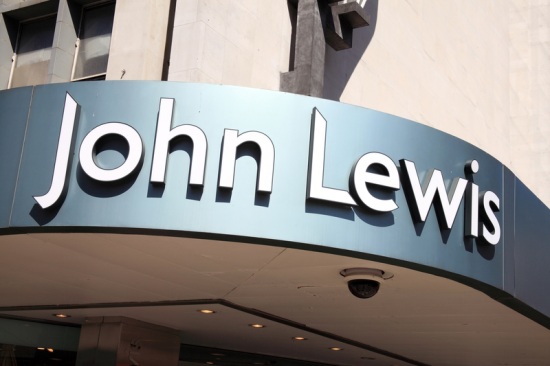In the current economic climate, many large retail groups who, in the years prior to 2008, posted staggering profits annually are now struggling to find their footing with consumers. Many have had to sell off brands under their umbrella and apply for a never ending stream of bank loans in order to remain afloat.

However, one group that has seemed largely unaffected by the economic hardships suffered by other retail giants is the John Lewis Partnership. The company, which owns both the John Lewis and Waitrose brands, has consistently posted impressive profits and growth throughout the double dip recession, and the trend has continued in the first half sales reports for 2012.
Both the John Lewis and Waitrose commercial property chains have performed admirably in the months leading up to the 28th July 2012, with each managing to post significant sales growth when compared to the same period in the 2011 financial year.
John Lewis achieved gross sales of £1.6 billion, an increase of £181 million which equates to a sales growth of 12.8 per cent. Like for like sales were also up by 9.2 per cent, while revenue increased by £147.1 million to £1.3 billion. The website associated with the chain, johnlewis.com, also managed to perform to a high level, achieving gross sales of £375.8 million. In percentage terms, this means that the website’s custom increased by 43.1 per cent when compared to the first half of last year.
Waitrose added to the group’s success by posting an increase of 6.6 per cent in gross sales, up £172.8 million to £1.6 billion. Like for like sales, which exclude petrol and diesel sales, rose by 2.2 per cent, while the chain recorded revenue of £2.6 billion – an increase of £162.6 million, or 6.6 per cent.
Both brands also increased their selling space by opening new commercial property stores in the first half of 2012. John Lewis opened two new “John Lewis at home” properties in Chichester and Newbury, while Waitrose increased their selling space by 2 per cent exactly. This was thanks to the opening of ten new branches, which included four full size supermarkets and six additional convenience stores across the country.
Altogether, this added up to a great deal to celebrate in the John Lewis Partnership boardroom. Group gross sales were up 8.7 per cent to £4.4 billion, with revenue totalling a colossal £3.9 million. This translated to a combined group pre-tax profit of £144.5 million – an impressive increase of 59.8 per cent on the previous year.
Charlie Mayfield, chairman of the John Lewis Partnership, is confident that the results achieved in the first half of the financial year will continue, but that they are expected to slow as the Partnership invests in the long term future for both brands within the group.
He says; “In the first six months of the year the Partnership has traded strongly in a tough market, and achieved robust sales and profit growth. Both Waitrose and John Lewis grew sales ahead of their respective markets, increasing their market share.
“Our rate of growth will remain positive but will be slower in the second half and, with further investment planned in that period to strengthen our business for the longer term, the rapid rate of profit increase is not expected to be carried through to the full year.
“This is consistent with our long term commitment to building the Partnership for the future.”
Unfortunately, not all large retail groups are enjoying the same success as the John Lewis Partnership. The Home Retail Group, which owns the Argos and Homebase chains, were forced to post slightly disappointing second quarter sales after a washout summer, largely thanks to the dismal weather suffered across Britain for much of the season.
Although Argos managed to achieve a total sales growth of 1 per cent, equalling £867 million, for the quarter, net closed space had an adverse effect upon overall sales results. Seven stores which were deemed unprofitable were closed nationwide in the second quarter alone, reducing the brand’s store portfolio to 739 across the United Kingdom.
However, Argos did manage to achieve growth in many areas of the business, including the Check and Reserve and Internet sales areas of the commercial property chain. Check and Reserve sales grew by 24 per cent, and altogether represented 30 per cent of all sales made by Argos in the second quarter. Meanwhile, total sales made in the internet aspect of the business increased by 16 per cent, making up 42 per cent of total Argos sales.
Like for like sales increased by a total of 1.4 per cent when compared to the second quarter of the 2011 financial year, largely driven by the increasing demand for tablet computers and e-readers.
Homebase failed to match its partner’s successes, with total sales for the brand declining by 3.9 per cent to £366 million. Contributing to the hardships suffered by Homebase was the closure of one store, reducing net sales by 0.2 per cent and reducing the brand’s property portfolio to 340.
Like for like sales also decreased by 3.7 per cent in the quarter, a statistic which the Home Retail Group puts down to poor seasonal product sales. With summer usually being a successful season for the brand, due to consumers purchasing barbecues, gazeboes and other products for use outdoors, the adverse weather experienced in Britain this year would most certainly have put a damper on Homebase’s sales.
All in all, the second quarter has been a mixed bag for large British retailers. With the influence of the Olympics, Diamond Jubilee and Paralympics making sales unpredictable for most retail commercial properties, it remains to be seen whether the Home Retail Group will have any chance of catching up the John Lewis Partnership in terms of results come the end of 2012 and the final annual sales reports.